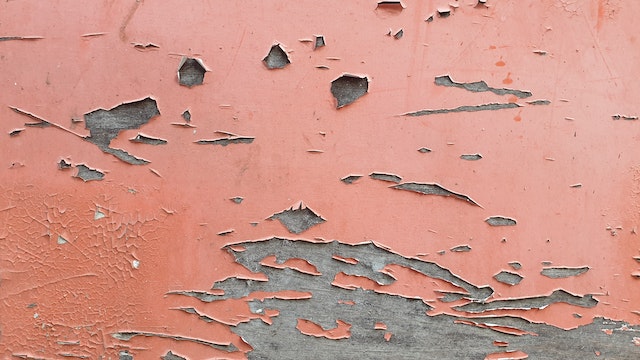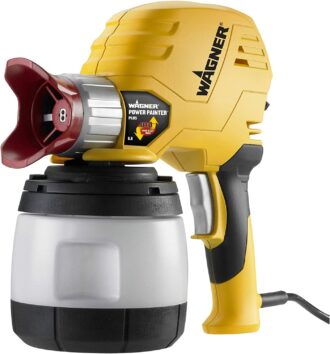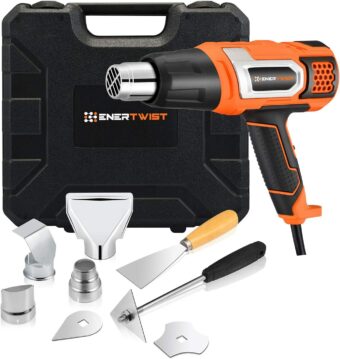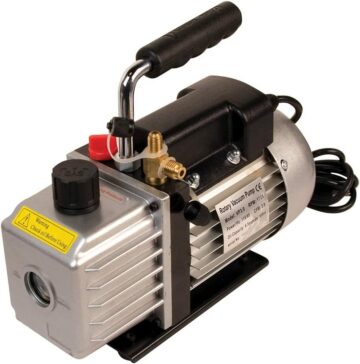If a painted surface is clean and in good shape, you can usually paint over it without removing the old paint. But if the old paint is broken, peeling, blistering, or otherwise loose, painting right over it is a bad idea. At first, the new paint will cover up the flaws, but it won’t be long before the layer underneath bubbles up and makes your work look bad. So, to get a good base for your next color of paint, you’ll need to spend some time taking off the old paint.
Most of the time, a wire brush, a paint scraper, or a combination of both are used to scrape paint. This can be hard to do and take a lot of time. If you want, you can just work on the spots that aren’t perfect and then sand the surface to make it smooth. But if you want the smoothest finish, it’s best to get rid of all the old paint first.
Table of Contents
How to Scrape Paint With 3 Common Tools

Here are three hand tools that can be used to remove paint.
Brush Wire
Pros
- Inexpensive
- User-friendly
- No set-up time
Cons
- Not good for paint that is firmly attached
- The metal will rust.
- Causes debris to fly
To get rid of paint that is raised, peeling, or blistering, you can use a brush with metal wire bristles. Wire brushes are cheap and easy to use, while a power sander takes time to set up and is more expensive. Wire brushes are also useful for cleaning tools like putty knives and wallboard knives, as well as paint scrapers.
Even though wire brushes are easy to use and cheap, they don’t work on anything but the most raised, peeling, and blistering paint. If the paint is stuck to the surface even a little bit, the brush won’t be able to take it off.
The paint chips will also fly out of the work area if you brush too hard. By putting down a dropcloth, the paint flakes will stay in one place.
To get the old paint off the window, use a brush with metal bristles.
Go over the painted surface with the wire brush.
To remove paint that is peeling off in a big way, lightly drag your wire brush along the edge of the peeling paint. Sweep in the direction of the paint strokes, if you can see them, where the paint is closer to the surface. If not, go in the direction that the paint seems to want to come off.
Get the Wire Brush clean.
When you’re done, run the wire brush under water to clean it. Shake out the brush, and then use a heat gun or a towel to dry it completely.
If you need to, use a paint scraper next.
Most of the time, a wire brush works well to remove loose paint, but it’s rarely enough to strip a surface completely. So you might need to use a paint scraper to do some extra work.
Pros
- Useful for large, flaky areas of paint
- Inexpensive
- Simple to use
Cons
- Can damage the surface
- Requires much effort
- Slow
Using a paint scraper by hand is an old but reliable way to get rid of the paint. Using a hand scraper to remove paint does take some work, but the job will go well if you take your time and stop to rest often. There are many different kinds of paint scrapers that can help you get under stubborn layers of old paint.
Heavy-duty 3-inch flat scraper: This scraper’s handle gives you a firm grip as you push it into the paint. This tool looks like a large putty knife and is flat.
A 2.5-inch two-edged paint scraper has a thin handle and a wide head. It looks like a large face razor. Some heads have scraper blades that can be changed out. When an old blade gets dull, switch it out for a new one. This tool is made so that you can pull it toward you instead of pushing it forward.
Multi-use painter’s tool: Also called a 5-in-1 tool, an 8-in-1 tool, a 14-in-1 tool, and a few other names, this tool is very useful for more than just scraping paint. It can be used for a wide range of home improvement tasks. This tool can be used to spread wood filler, chisel, open paint cans, clean rollers, and other things.
A putty knife is made for using wood filler or joint compound, but its blunt end makes it perfect for scraping paint without scratching the surface.
1. Go over a whetstone with a paint scraper.
When taking off paint, it helps to have both a sharp and a dull scraper. Run the blade of your sharp tool over a whetstone to sharpen it. It doesn’t have to be as sharp as a knife.
2. Use the Blunt Tool to scrape off loose paint.
Start by using the blunt tool. Put the end of the scraper on any loose paint flakes and push gently. Keep pushing until the paint is no longer easy to remove.
3. If you need to, switch to the sharp tool.
Change to the sharp tool if the paint still has a raised edge. Put the end of the scraper under the raised edge and gently push forward until the paint is no longer easy to remove with the scraper. When you use a sharp scraper, be careful not to scratch the surface.
4. Clean the scrapers.
To stop rust, wash your scrapers under running water and let them dry.
Pros
- Useful for paint that is firmly attached
- Useful for all kinds of paint
- Several scraper attachments are available
Cons
- Fire danger
- Slow
- Requires electrical outlet
A heat gun with at least 1,000 watts of power can be used to take off the paint. Even though heat guns are slow, they work. Some heat guns have scraper attachments that make it even easier to take off the paint. But you can also use a heat gun and a separate scraper to get the job done.
1. Get your scraper and heat gun together.
If your heat gun has a scraper head attachment, put it on the end of the gun while it’s not plugged in. If not, just hold a blunt scraper in one hand and a heat gun in the other.
2. Heat the paint with the heat gun.
Start by turning the heat gun to its lowest setting. Hold the tip of the tool close to the painted surface if it has a scraper attachment. If not, move the heat gun away from the surface a few inches. Let the paint heat up for about 20 seconds while you lightly wave the gun over the surface.
3. Push the scraper forward
Aim the heat gun away from your work, or turn it off for a moment, so you don’t burn your fingers as you move the scraper attachment or manual scraper a few inches forward to peel off the heated paint. If the paint has been warmed up enough, it will be a little bit soft and easy to peel off the surface. If you heat the paint too much, it can get sticky and hard to get off. The more you do it, the easier it will be to figure out how much heat to use.





